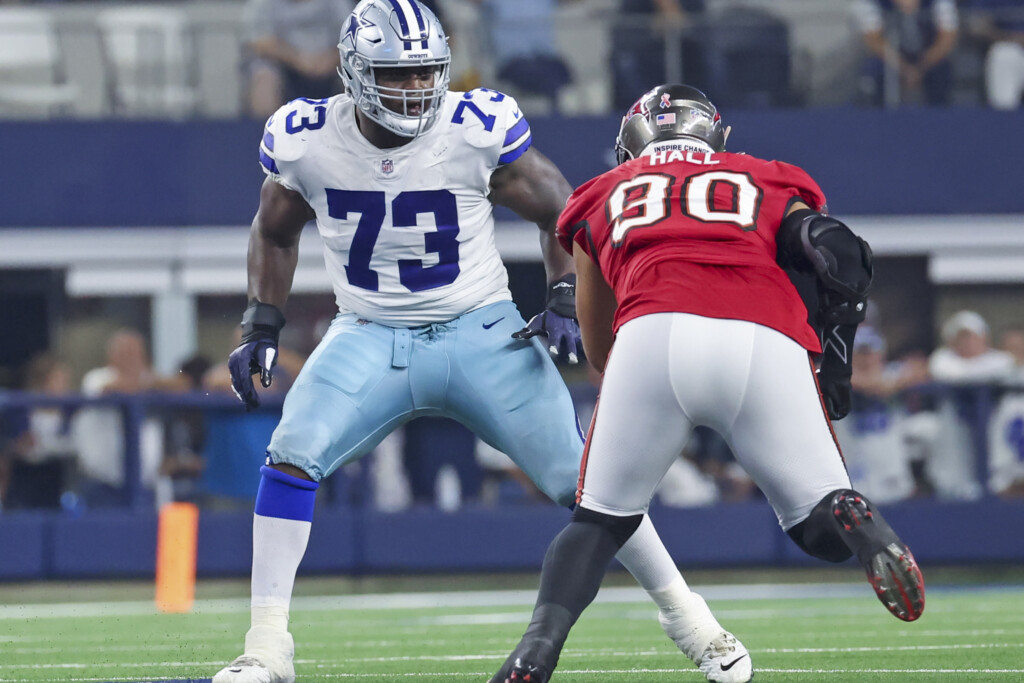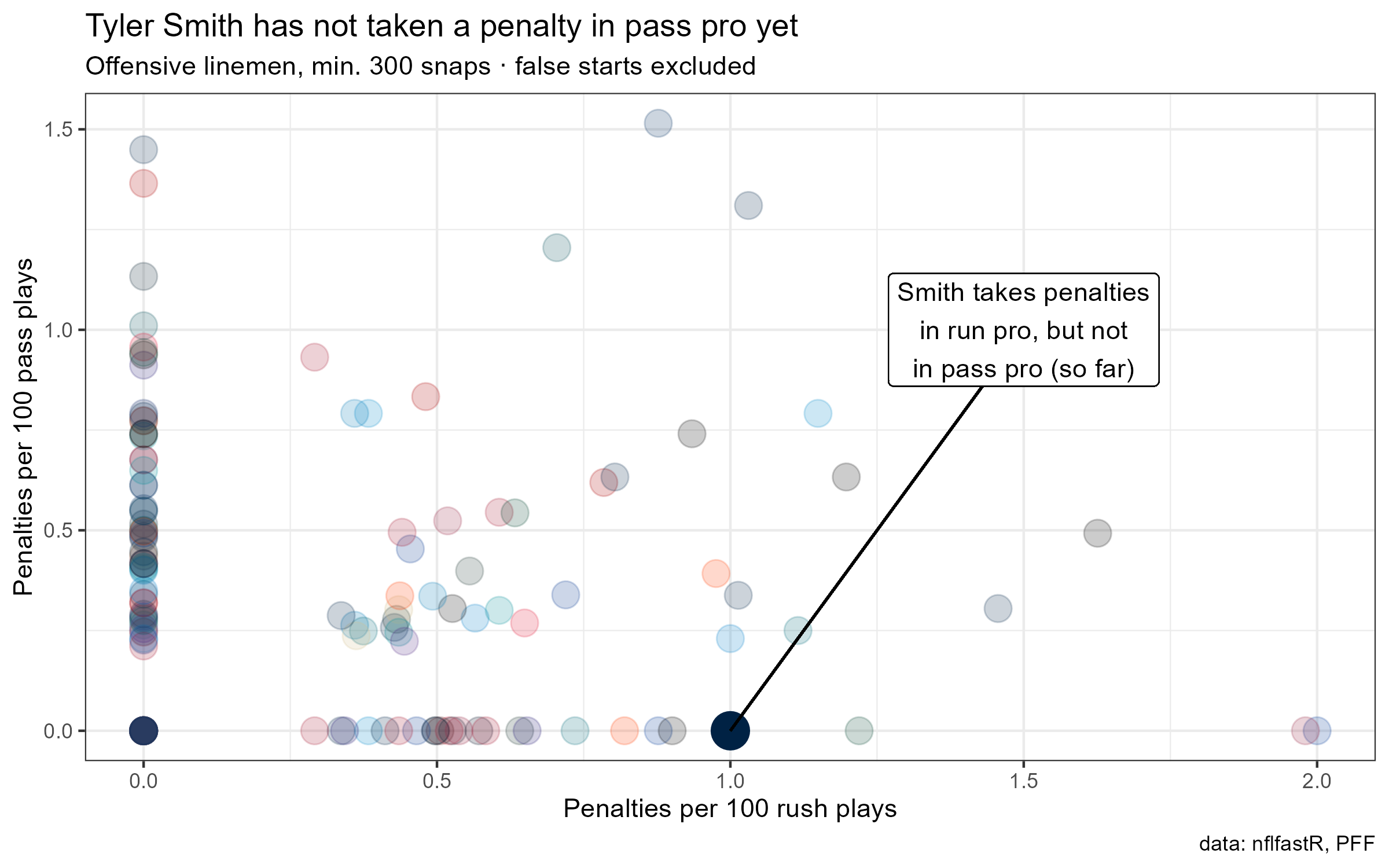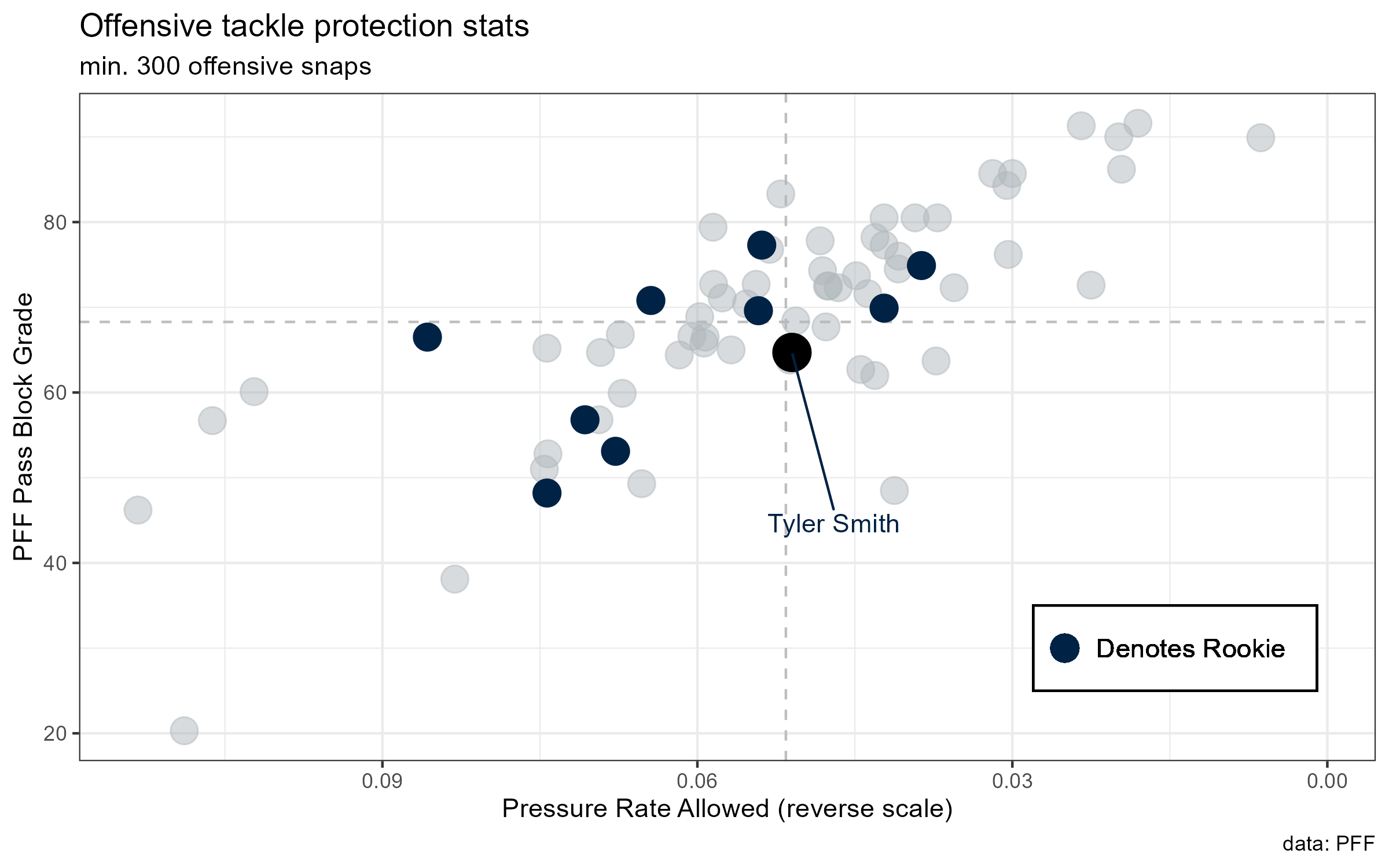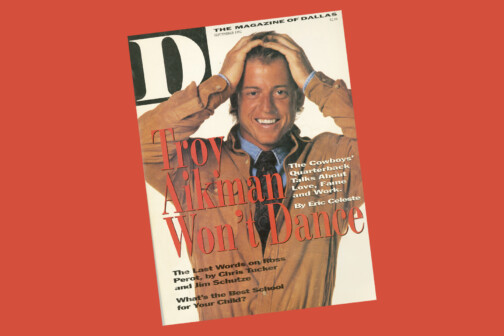There was so much to love about the Cowboys’ 40-3 shellacking of the Vikings on Sunday in Minneapolis. The offense made it look easy, surpassing 150 yards on the ground and 300 yards through the air. The defense racked up seven sacks and didn’t allow a touchdown. In fact, Minnesota didn’t cross the 50-yard line in the final 51 minutes, save for a single play. Oh, and I hear Tony Pollard had a decent game, too.
There are so many numbers to consider when it comes to this big win that it’s difficult to pin down just one that you really need to know. But there is an under-the-radar number that is not getting enough attention—and it has implications for the remainder of the season. The number you need to know from this dominant victory is 0.
That’s the number of pressures allowed by rookie left tackle Tyler Smith. It was his first game with a 100 percent pass-blocking efficiency, according to Pro Football Focus.
Smith is only 10 games into his NFL career, but he already has been thrown a few curveballs. When the Cowboys selected him with the 24th pick in the draft this spring, questions abounded about whether one of the youngest players in the draft pool could play right away for a team built to win now. And if he was, where would he fit along the offensive line? Is he the heir apparent to Tyron Smith? Right tackle of the future? The answer, in training camp at least, was that he would settle in at left guard next to Tyron Smith. But the best-laid plans often go awry, and Stephen Jones’ comments after the draft that Smith (Tyler) could be an insurance policy for the oft-injured Smith (Tyron) proved all too true, all too soon.
With Tyron Smith sidelined since preseason, Tyler Smith shifted to the left tackle spot sooner than expected. Smith isn’t unfamiliar with the position, as he spent his college years playing there, but the NFL is decidedly different from the competition he faced at Tulsa. After a small sample size, it appears that Smith will indeed live up to his draft status—both the good stuff that got him drafted in the first round and the not-so-good that led some critics to bemoan the selection.
The biggest criticism of the pick was that selecting one of the most penalized offensive linemen in college did not seem to be the prudent choice for a team with a penalty problem. As it turns out, Smith does still take an above-average number of penalties. But that’s not the whole story. When is he taking these penalties?
Smith has not been penalized in pass protection, with the caveat that he does have three false starts that may or may not have been pass plays—we’ll never know because the plays didn’t happen. Once the ball is snapped, though, Smith has a clean sheet in terms of penalties taken while protecting Dak Prescott’s blind side. It’s in the run game that Smith’s penalty issues have been an issue. No player in the NFL has more holding penalties on run plays than Smith’s three, and even accounting for the number of run-blocking snaps doesn’t make it look better, as shown in the chart above. He has been flagged for the 11th-most penalties on a per-run-play basis among all offensive linemen, and he’s among the 10 most-penalized offensive tackles in this same category.
That said, there’s still been a lot to like about Smith’s run blocking. The penalties understandably drag down his run-blocking grade from Pro Football Focus, but there’s another statistic that ignores penalties: ESPN’s Run Block Win Rate, or RBWR. This uses tracking data to measure how often a lineman holds his block and prevents his opponent from sealing a gap. Heading into Week 11, Smith ranked as the seventh-best run-blocking offensive tackle. He’s winning on 80 percent of his snaps. That powerful, mauling run blocker has delivered as advertised.
Smith’s pass blocking hasn’t stood out quite as much as his run blocking, but it’s still been quite good for a rookie left tackle. With more than 300 pass-blocking snaps to assess, Smith ranks around average in terms of pressure rate allowed and PFF pass-blocking grade.
In pass protection, Smith isn’t taking penalties, and he’s holding his own against some really good pass rushers. That was most evident against Minnesota, when the Vikings’ top pass rushers, Za’Darius Smith and Danielle Hunter, didn’t record a pressure when going up against Smith, and these are two guys whose pressure numbers always look good. Smith’s solid pass blocking also held up after a late-game position change. He moved to left guard in garbage time (which was quite a bit of time in this one), his first regular-season taste of the position he’ll be expected to handle when Tyron Smith returns to the lineup.
One final encouraging note about his pass blocking is that Smith’s pressure rate allowed has improved almost every game since allowing two sacks against the Rams in Week 5.
There’s no room to improve upon a “zero pressures allowed” game, but switching to guard and playing alongside Tyron Smith will nonetheless accelerate continued growth in the Cowboys’ young lineman. Smith has already proven himself a capable fill-in at the left tackle position, and playing alongside one of the best in the business could help him grow into the full-time gig sooner rather than later. For now, though, it’s time to enjoy a healthier offensive line with a couple of really large, talented Smiths playing together on the left side.
Get the ItList Newsletter
Author









